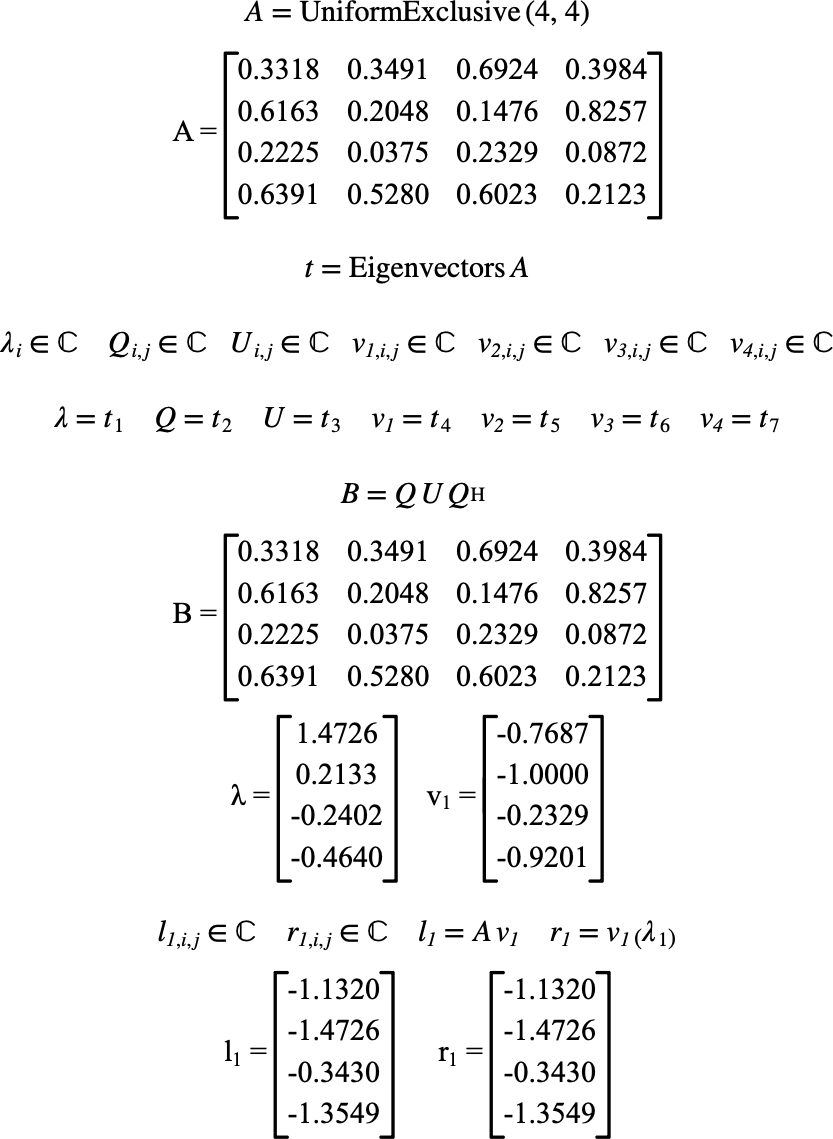\(\text{Eigenvectors}\)¶
You can use the \(\text{Eigenvectors}\) function to calculate eigenvectors, eigenvalues and Schur decomposition of the matrix.
You can use the \eigenvectors backslash command to insert this function.
The following variants of this function are available:
\(\text{tuple } \text{eigenvalues} \left ( \text{<matrix>} \right )\)
The \(\text{Eigenvectors}\) function returns a tuple that will contain:
A column matrix holding the eigenvalues of the matrix.
The Q unitary matrix matrix from the Schur decomposition.
The U upper triangular matrix that represents the Schur decomposition.
Zero or more column matrices representing the eigenvectors corresponding to the supplied eigenvalues.
Figure 127 shows the basic use of the \(\text{Eigenvectors}\) function.

Figure 127 Example Use Of The Eigenvectors Function¶
